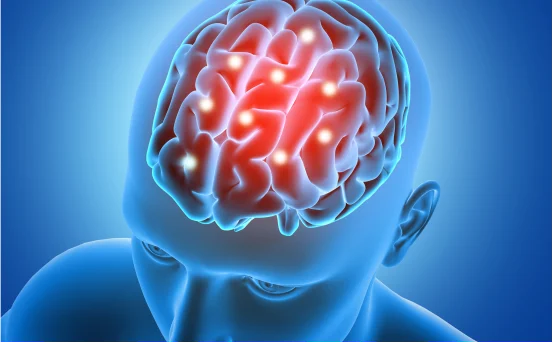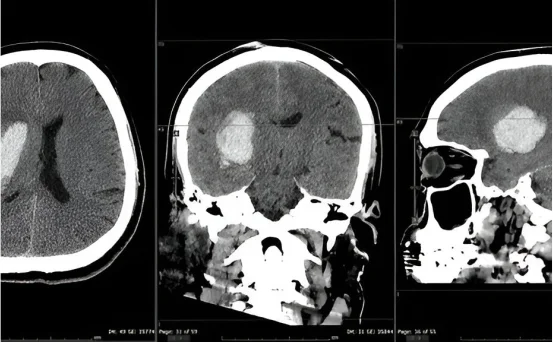What is thalamotomy surgery is a specialized neurological procedure used to treat movement disorders such as Parkinson’s disease, essential tremor, and dystonia. It involves the precise destruction or alteration of a small portion of the thalamus a vital brain structure responsible for relaying motor and sensory signals. Thalamotomy has gained recognition for its ability to provide long-lasting relief from debilitating tremors when medications fail to work effectively.
Thalamotomy is a minimally invasive neurosurgical procedure that involves disabling a small, targeted portion of the brain’s thalamus to disrupt abnormal electrical signals responsible for tremors. By focusing on the ventral intermediate nucleus (VIM) of the thalamus, surgeons can significantly reduce or eliminate tremors on one side of the body. Although it is not a cure for the underlying neurological condition, thalamotomy offers life-changing symptom control especially for patients whose symptoms are resistant to medication.
What is Thalamotomy Surgery?
The thalamus is a part of the brain located deep within the cerebral hemispheres. It acts as a relay station for transmitting motor, sensory, and pain signals to various parts of the brain. In individuals with movement disorders, certain regions of the thalamus can become overactive or misfire, leading to tremors, rigidity, and other motor impairments.
Thalamotomy is a neurosurgical procedure that targets a specific area of the thalamus typically the ventral intermediate nucleus (VIM) to interrupt abnormal nerve signals. This helps reduce tremors and improve motor control, especially in patients who have not responded well to medications or other therapies.
Conditions Treated with Thalamotomy
Thalamotomy surgery is generally recommended for patients with :-
-
Parkinson’s disease :- Particularly for controlling tremors that are resistant to levodopa or other medications.
-
Essential tremor :- A common movement disorder causing rhythmic shaking, often affecting the hands, head, or voice.
-
Dystonia :- In some cases, thalamotomy may be used to relieve involuntary muscle contractions or twisting movements.
-
Multiple sclerosis (MS) :- When tremors significantly impact daily function and other treatments fail.
Thalamotomy is usually considered when the tremors are disabling and only affect one side of the body, as the procedure is often performed unilaterally (on one side of the brain).
Types of Thalamotomy
Thalamotomy can be performed using different techniques. The main types include :-
- Radiofrequency (RF) Thalamotomy :- In RF thalamotomy, a neurosurgeon inserts a thin electrode into the brain through a small skull opening. Using heat generated by radiofrequency energy, a small lesion is created in the targeted thalamic area to stop abnormal nerve activity.
- Stereotactic Thalamotomy :- This minimally invasive approach uses 3D imaging and a stereotactic frame to accurately target the VIM nucleus of the thalamus. Once located, the specific site is ablated with precision.
- MRI-Guided Focused Ultrasound (MRgFUS) Thalamotomy :- This is a non-invasive technique that uses high-intensity focused ultrasound beams to create a lesion in the thalamus without making any incisions. It is guided in real-time using MRI imaging. MRgFUS is approved for treating essential tremor and certain cases of Parkinson’s tremor.
How to Prepare for Thalamotomy Surgery
Before undergoing thalamotomy, the patient typically undergoes several evaluations :-
-
Neurological assessment to determine severity of tremors and suitability for surgery.
-
Brain imaging (MRI/CT scans) to map the exact location of the thalamus.
-
Medication review to understand what has or hasn’t worked.
-
Blood tests and pre-op clearance for safe anesthesia and surgery.
Patients are often advised to avoid blood thinners and stop eating or drinking several hours before the surgery.
What Happens During the Procedure?
Here’s a step-by-step overview of a typical thalamotomy procedure (radiofrequency or stereotactic) :-
-
Anesthesia :- The patient is usually awake under local anesthesia to monitor real-time brain function.
-
Head stabilization :- A stereotactic head frame is used to prevent movement.
-
Imaging guidance :- MRI or CT scans help pinpoint the exact thalamic target.
-
Electrode insertion :- A small burr hole is drilled into the skull, and an electrode is inserted into the brain.
-
Stimulation testing :- Electrical stimulation is used to test the electrode placement by observing symptom response.
-
Lesioning :- Once confirmed, radiofrequency heat is applied to create a tiny lesion.
-
Closure :- The equipment is removed, and the incision is closed.
The entire procedure takes about 2–3 hours, and patients are often monitored overnight in a neurosurgical unit.
Recovery and Postoperative Care
Recovery from thalamotomy is usually rapid, especially with less invasive methods. Here’s what to expect :-
-
Hospital stay :- Typically 1–2 days for observation.
-
Initial results :- Most patients notice immediate tremor relief after surgery.
-
Follow-up :- Regular visits for neurological assessment and rehabilitation, if needed.
-
Activity restrictions :- Avoid strenuous activity for a few weeks; normal daily tasks can be resumed soon.
-
Medications :- Some patients can reduce or stop tremor medications post-surgery under guidance.
Benefits of Thalamotomy Surgery
-
Significant tremor reduction on the treated side
-
Improved quality of life and ability to perform daily activities
-
Minimally invasive options like MRgFUS available
-
Cost-effective compared to deep brain stimulation
-
Quick recovery time
Risks and Side Effects
While thalamotomy is generally safe in experienced hands, some potential risks include :-
-
Weakness or numbness on one side of the body
-
Speech or balance difficulties
-
Cognitive or emotional changes (rare)
-
Infections or bleeding (very rare)
-
Side effects depend on the precise location of the lesion and patient factors
Proper patient selection and surgical planning greatly minimize these risks.
Who is a Good Candidate for Thalamotomy?
Ideal candidates for thalamotomy include :-
-
Individuals with disabling tremors from Parkinson’s disease or essential tremor
-
Patients with one-sided symptoms
-
Those who do not respond to medications
-
People unsuitable for or unwilling to undergo deep brain stimulation
-
Patients without severe cognitive or psychiatric conditions
Consultation with a neurologist and neurosurgeon is crucial to assess suitability.
Conclusion
Thalamotomy surgery offers a powerful option for patients suffering from movement disorders like Parkinson’s and essential tremor. With advanced techniques such as MRI-guided focused ultrasound, the procedure is now safer, quicker, and even non-invasive in some cases. For those struggling with severe tremors that resist medication, thalamotomy can restore independence, confidence, and quality of life.























